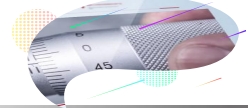What is CIM?
Ceramic Injection Molding (CIM) combines polymer molding techniques with ceramic preparation. It’s a subset of Powder Injection Molding (PIM), similar to Metal Injection Molding (MIM). CIM blends ceramic powders with additives like resins and lubricants to form a compound, which is heated and injected into molds for shaping.
CIM surpasses traditional dry pressing methods in dimensional accuracy, intricacy, and aesthetics. It’s highly efficient, reduces cycle time, and is cost-effective. Thus, CIM serves as an efficient, precise manufacturing process with broad applications.

The process flow of Ceramic Injection Molding (CIM)
The process flow of Ceramic Injection Molding (CIM) for precision ceramic molding consists of the following four main steps:
- Feedstock Preparation:
Feedstock, a mix of ceramic powder and binders, must have good flowability for injection. This involves selecting suitable components, mixing them at specific ratios, and blending uniformly at a set temperature. This preparation ensures smooth processing and the transition of products from lab to market.
- Injection Molding and Mold Design:
Improper management of the injection molding process can cause defects, which may only be visible after debinding and sintering. The use of multi-cavity molds and recycled material can lead to size variations and affect viscosity. Therefore, it’s vital to control and optimize molding parameters to reduce weight fluctuations, prevent component segregation, and improve yield and material use.
CIM mold design controls feedstock flow during injection molding. It’s critical for small, complex parts with high precision needs, requiring careful gate, runner, and vent designs. Understanding feedstock properties, mold temperature, and stress distribution is also essential, with computer simulation aiding the design process.
- Debinding Process:
Debinding, the removal of organic materials from a molded body, is a pivotal step in injection molding. Improper debinding can cause inconsistencies, deformation, and stress, which can’t be compensated for during sintering. The method depends on the binder used and includes thermal and solvent debinding, as well as newer methods like catalytic debinding and water-based extraction.
- Sintering:
After debinding, ceramic green bodies are sintered at high temperatures for the desired appearance, accuracy, and microstructure. As these bodies have pores from debinding, they shrink about 13%-15% during sintering. Hence, CIM research focuses on sintering dimensional accuracy, and sintering equipment is vital.
Comparison of Various Ceramic Production and Processing Technologies
The advantages of ceramic injection molding
- Near-net shaping capability: Injection molding can directly produce small ceramic components with complex geometries and special requirements, eliminating the need for machining or reducing the machining required after sintering. This reduces the expensive ceramic processing costs.
- High degree of mechanization and automation: Injection molding has a short forming cycle, typically only a fraction of the time required for traditional casting or hot pressing. The strength of the green parts is high, enabling automated production. The management and control of the production process are also convenient, making it suitable for mass production.
- Uniform density of green parts: Due to the good flowability of the binder, the density of the injection molded green parts is relatively uniform, which contributes to higher product quality and performance.
- High geometric dimensional accuracy: The homogeneous mixture of powder and binder, along with minimal gaps between powder particles, leads to consistent shrinkage during sintering. This ensures even density across all parts of the ceramic components, yielding high geometric dimensional accuracy and a smooth surface finish.
Disadvantages of Ceramic Injection Molding
High initial equipment investment and processing costs, making it suitable primarily for mass production.
Comparison of Various Ceramic Production and Processing Technologies
| Manufacturing methods | Material | Product Shape | Uniformity | Efficiency | Cost | ||||
|---|---|---|---|---|---|---|---|---|---|
| Dry pressing | Granulation powder | flat shape | Bad | High | Low | ||||
| Cold isostatic pressing | Granulation powder | cylinder cylindrical sphere | Good | Medium | Medium | ||||
| Slip casting | Slurry | complex shape large size | Better | Low | Low | ||||
| Extrusion molding | Slurry | cross-section less than 1mm thick | Good | High | Medium | ||||
| Gel casting | Slurry | Complex shape, thick cross-section, large size | Better | Low | Low | ||||
| Direct solidification casting | Slurry | Complex shape with thick cross-section | Good | Low | lower | ||||
| Extrusion molding | Granulation powder | Cylindrical or tubular, elongated products | Medium | High | Medium | ||||
| Hot pressing | Granulation powder | Complex shape, small size | Better | High | lower | ||||
| Injection molding | Granulation powder | Complex shape, small size | Excellent | High | Medium |
Application Of CIM
This technology is most advantageous for the mass production of high-precision, complex-shaped ceramic products. Currently, ceramic injection molding is widely used in the shaping of various ceramic powders and various engineering ceramic products. Various precision ceramic components produced through this process have been used in aerospace, automotive, machinery, energy, optical communication, biomedical, and other fields.
Consultative Design Services
JunKun Custom Metal Injection Molding Service provides free Consultative Design Services throughout the process. It includes all processes from your design stage to mass-produced finished products.
1.Material Selection Consultation
2.Structural design service
3. Mold design service
4.MIM part manufacturing
Ready to unlock CIM Manufacturing’s potential for your project? Contact us to see how our advanced CIM technology can precisely, strongly, and efficiently turn your designs into reality.


